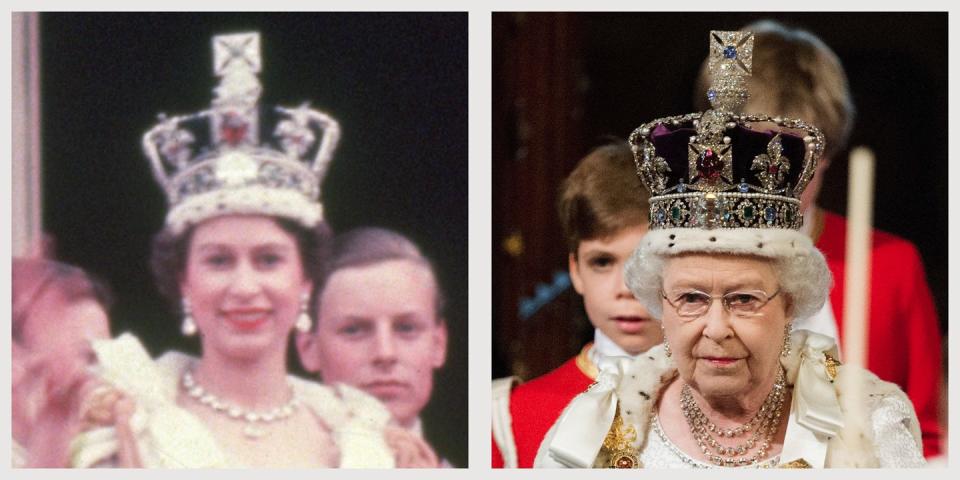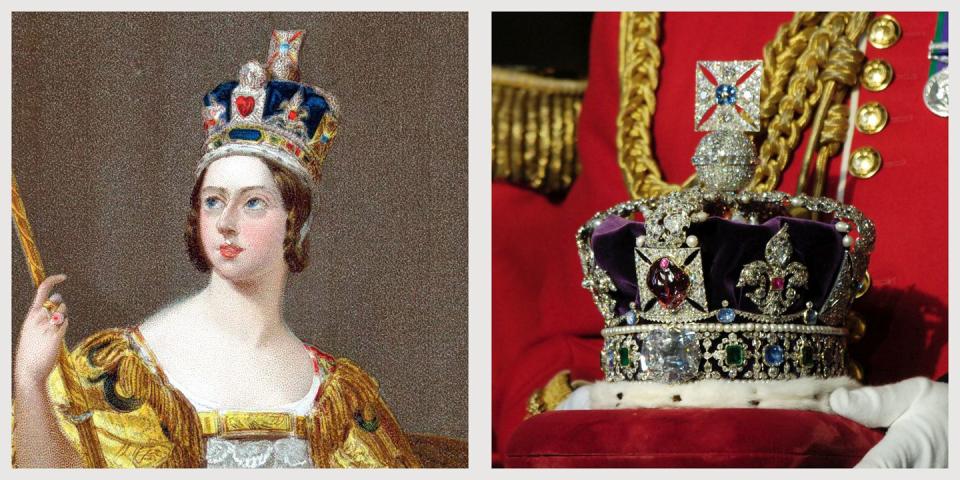The Mysterious and Controversial History of Britain's Imperial State Crown
- Oops!Something went wrong.Please try again later.
King Charles III's coronation on May 6, 2023 is expected to be a slight departure from the coronations of the past. Per Buckingham Palace, the service will "reflect the monarch’s role today and look towards the future, while being rooted in longstanding traditions and pageantry." While it's not yet clear precisely what that will mean, all signs suggest that the monarch will be crowned, as per tradition, with the St Edward’s Crown. However, it's likely that that crown's appearance will be short-lived, as it's typically only used for the moment of crowning itself. Instead, when (and if) Charles appears on Buckingham Palace's balcony after the ceremony, it's likely that he'll be wearing the Imperial State Crown.
Last seen alongside some of the other crown jewels when they made the final journey with Queen Elizabeth II during her state funeral in 2022, the Imperial State Crown remains a glittering symbol of the sovereign. It was worn by the late Queen for her coronation in 1953, and on many official occasions over the course of her historic reign, however, in 2016, and for every State Opening of Parliament thereafter, it was placed a velvet pillow right next to Her Majesty. At almost three pounds and laden with 2,901 stones, it had simply become too heavy a burden to bear.
"You can't look down to read the speech, you have to take the speech up, because if you did, your neck would break, it would fall off,” Queen Elizabeth once explained in a documentary. “So there are some disadvantages to crowns, but otherwise they're quite important things."

And the Imperial State Crown is without a doubt a quite important thing. Included in the almost three thousand stones adorning it are some of history’s most legendary gems, including the 317.4-carat cushion-cut Cullinan II diamond (given to King Edward VII in 1909), the St Edward's Sapphire (said to have started life as Edward the Confessor's ring), the Stuart Sapphire (once on the front of the crown but now moved to the back), and the Black Prince's Ruby.
That large red stone at the center of the Imperial State Crown has been there from the time the crown was re-imagined for Queen Victoria in 1838. (The crown has gone through several reincarnations since the restoration of the monarchy in 1660). Though it is known as the Black Prince's Ruby, it is, in fact, a 170 carat red spinel. Sometimes called the Great Imposter, it is said to have been stolen in 1371 from the body of the Sultan of Grenada by Pedro the Cruel. Edward of Woodstock (the Black Prince) offered Don Pedro shelter; Don Pedro offered the Black Prince untold treasures in return, including one massive red stone.

The “Black Prince’s Ruby” was worn on battlefields by Henry V at Agincourt (where it might have saved him: when the king was struck in the head, not only did he survive but so did the stone) and Richard III at the Battle of Bosworth (where it didn’t bring quite the same kind of luck). There is evidence it was part of Henry VIII’s treasure trove as well.
One of the most valuable gems in one of the most treasured jewelry collections in the world, the stone has sometimes been thought to bring a curse with it. Queen Elizabeth II’s long and prosperous reign forced that myth to be reconsidered; though in the wake of her death, its appearance in the official royal funeral services sparked discussions over the true ownership of some of the royal gems, including the Cullinan diamond. Whether that controversy will follow the crown to Charles's coronation remains to be seen.
You Might Also Like

